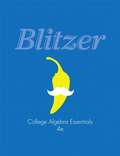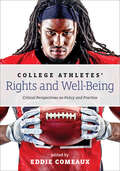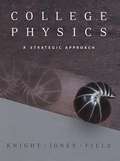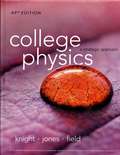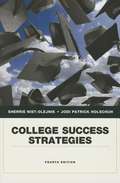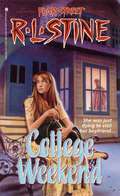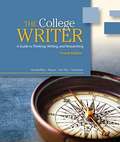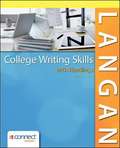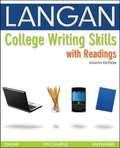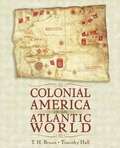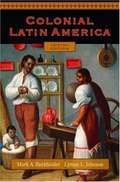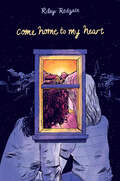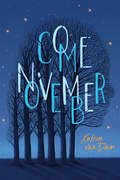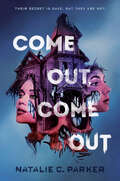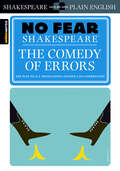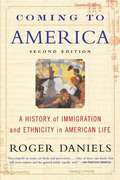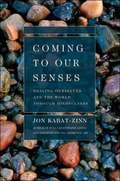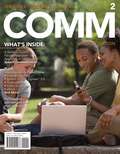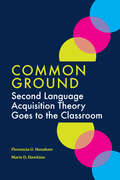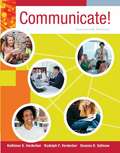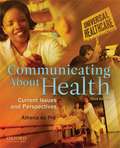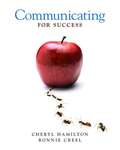- Table View
- List View
College Algebra Essentials
by Robert F. BlitzerBob Blitzer has inspired thousands of students with his engaging approach to mathematics, making this beloved series the #1 in the market. Blitzer draws on his unique background in mathematics and behavioral science to present the full scope of mathematics with vivid applications in real-life situations. Students stay engaged because Blitzer often uses pop-culture and up-to-date references to connect math to students' lives, showing that their world is profoundly mathematical.
College Athletes’ Rights and Well-Being: Critical Perspectives on Policy and Practice
by Eddie ComeauxAddressing major policy issues and athletes’ well-being in collegiate sports.College athletes are at the very center of emerging campus debates over their legal, financial, and academic role. Amid ongoing litigation and pressure from internal and external stakeholders, many policy makers and university leaders are scrambling to determine the nature of this role. This timely and comprehensive volume identifies and discusses bylaws and legal decisions that have impacted the college athlete’s ability to pursue higher education. It also explains and critiques the formal policies of the National Collegiate Athletic Association and member institutions while examining critical issues relevant to the growing fields of sport management, athletic administration, and sports law. Aimed at anyone seeking to enhance their understanding of the intercollegiate athletics landscape, College Athletes’ Rights and Well-Being is divided into four sections. The first lays out the historical foundations that have shaped the intercollegiate athletic experience. Subsequent sections describe the principles, structures, and conditions that influence how athletes experience campus life, as well as the increasingly commercialized business enterprise of college sports. Told from the perspective of athletes and written by leading scholars and researchers, the book’s sixteen chapters are enhanced with useful lists of key terms and conversation-provoking discussion questions. Touching on everything from concussion protocols and collective bargaining to amateurism, Title IX’s gender-separate allowance, and conference realignment, this important book is designed for upper-level undergraduate and graduate students, scholars, educators, practitioners, policy makers, athletic administrators, and advocates of college athletes.
College Physics: A Strategic Approach
by Randall D. Knight Brian Jones Stuart FieldThis book is a new algebra-based physics textbook for students majoring in the biological and life sciences, architecture, natural resources, and other disciplines.
College Physics: A Strategic Approach (AP Edition)
by Randall KnightBuilding on the research-proven instructional techniques introduced in Knight's Physics for Scientists and Engineers, College Physics: A Strategic Approach, 3/e has set a new standard for algebra-based introductory physics, gaining widespread critical acclaim from professors and students alike. The text and MasteringPhysics work together to help physics students see the big picture, gain crucial problem-solving skills, and better prepare for both their lecture and future. -- www.pearsonhighered.com
College Success
by Bruce Beiderwell Linda Tse Thomas J. Lochhaas Nicholas B. DekanterCollege Success takes a fresh look at what it means, in today's world, with today's students, to be successful in college. Although many of the topics included--from study skills to personal health, from test-taking to managing time and money--will look familiar to those who have used student success texts that have been around for many editions, College Success takes a new approach. The focus is on realistic, practical tools for the students who need them. This is a book designed, frankly, for students who may have difficulty with traditional college texts. The style is direct and to the point. Information is presented concisely and as simply as possible. This is not a weighty tome that discusses student success--this is a manual for doing it. College student demographics have changed considerably in recent decades. More than a third of all students enroll not directly from high school but after a delay of some years. More students are working and have families. More students come from varied ethnic and cultural backgrounds. More students are the first in their family to attend college. More students have grown up with electronic media and now read and think in ways different from the previous generation. With these and so many other cultural changes, more students are not well prepared for a college education with the study skills and life skills they need to become successful students. For each student to get the most out of College Success and their college experience they must understand who they are as it relates to college. To that end, in every chapter students explore themselves, because success starts with recognizing your own strengths and weaknesses. Students make their own goals based on this self-assessment, determining what success in college really means for them as individuals. Interactive activities then help students learn the choices available to them and the possibilities for improving their skills. Skills are presented in step-by-step processes, tips for success in manageable highlighted displays. Most important, students always see the value of what they are reading--and how they can begin to apply it immediately in their own lives. College Success is intended for use in Freshmen Orientation, Study Skills or Student Success courses. A 2009 study revealed that currently nationwide, 34% of college freshmen do not return to their college for their sophomore year. This book is designed to help change that.
College Success Strategies (4th Edition)
by Jodi Patrick Holschuh Sherrie Nist-OlejnikThis book teaches students the skills and strategies that will enable them to be lifelong learners capable of knowing how to approach new and challenging material in college and beyond.
College Weekend (Fear Street Superchillers #32)
by R.L. StineNothing can ruin Tina River’s big weekend at Patterson College with her boyfriend, Josh. She’s so excited, she doesn’t even mind that her cousin, Holly, will be tagging along. But when Tina and Holly arrive, Josh is gone. His roommate, Christopher, says Josh is stuck in the mountains, delayed by car trouble. That’s weird—Josh never mentioned he was going away. It gets even weirder when Holly suddenly disappears. But Christopher isn’t worried about Holly or Josh. In fact, Christopher seems to have the answer to everything. Tina isn’t sure what’s going on, but one thing is clear: she’s about to learn more about love and murder than she ever wanted to know.
College Writer: A Guide to Thinking, Writing, and Researching
by Patrick Sebranek Verne Meyer Randall Vandermey John Van RysCombining streamlined basic writing instruction with outstanding accessibility, THE COLLEGE WRITER is a fully updated four-in-one text--with a Rhetoric, a Reader, a Researcher, and a Handbook--for students at any skill level. The clear visual "at-a-glance" format helps students grasp larger concepts by linking them to pertinent examples. Throughout the text, numerous student and professional writing samples highlight important features of academic and career writing--from using the appropriate voice to incorporating references--and offer models for students' own papers.
College Writing Skills with Readings
by John LanganGrounded in John Langan's Four Bases - unity, coherence, sentence skills, and support - College Writing Skills with Readings employs a unique personalized learning plan to address student deficits in grammar and mechanics and to free instructional time for activities emphasizing writing process and critical thinking. From mastering the traditional five-paragraph essay and its variations to learning about the finer points of grammar and punctuation, College Writing Skills with Readings empowers students to think more deeply about audience and purpose as they write for college and career. This new ninth edition provides a greater balance focus on personal, academic, and workplace writing.
College Writing Skills with Readings (8th edition)
by John LanganThis text offers students a practical guide to becoming better writers. From mastering the traditional five-paragraph essay and its variations to learning about the finer points of grammar and punctuation, the book empowers students to take control of their writing and put it to work for them.
Colonial America in an Atlantic World: A Study of Creative Interaction
by T. H. Breen Timothy D. HallBreen (Northwestern U.) and Hall's (Central Michigan U.) textbook covers the history of colonial North America from the pre-Columbian days to the end of the Seven Years War in 1763. The text explores the interaction and adaptations of various European, American Indian, and African peoples to one another and to the variety of social, political, environmental, and cultural processes set in motion by European exploration and settlement. Annotation ©2004 Book News, Inc., Portland, OR (booknews.com)
Colonial Latin America (6th edition)
by Mark A. Burkholder Lyman L. JohnsonNow in its sixth edition, "Colonial Latin America" provides a concise study of the history of the Iberian colonies in the New World from their pre-conquest background to the wars of independence in the early nineteenth century. The new edition of this highly acclaimed text has been revised and updated to reflect the latest scholarship, with particular emphasis on social and cultural history. It also features a new section on pre-Colonial Africa, to parallel coverage of pre-Colonial Spain and the Americas.
Come Home to My Heart
by Riley RedgateGorgeous in its sincerity and its precision—in its raw, honest depiction of what it feels like to be a gay teen in a world that says that you don&’t deserve a home.Gloria Forman and Xia Harper go to the same high school in a small South Carolina town, but they couldn&’t be more different. While Gloria is part of the popular, Christian crowd, Xia sleeps through class, antagonizes anyone who dares talk to her, and buries herself in books that help her pretend she&’s somewhere else—anywhere that being lesbian wouldn&’t be a waking nightmare. When the two form an accidental friendship, they begin noticing each other in ways they promised themselves they'd avoid. After all, Xia&’s isolation is self-imposed for a reason, and the last thing Gloria needs is more upheaval, especially after her parents kicked her out of the house for being gay. Ever since, she has spent her nights under the stage in the school auditorium and her days terrified of being discovered. Xia just wants to keep her head down until the end of senior year. Gloria just wants to keep her living situation quiet until her parents come around. But as their feelings for each other intensify and the truths they've hidden work their way to the surface, what they truly want will change forever.
Come November
by Katrin van DamThis refreshingly original, contemporary YA debut centers on Rooney, a teen girl struggling to hold her family together in the face of her mother's delusions.It's not the end of the world, but for Rooney Harris it's starting to feel that way. It's the beginning of senior year, and her mom just lost her job. Even worse, she isn't planning to get another one. Instead, she's spending every waking moment with a group called the Next World Society, whose members are convinced they'll be leaving Earth behind on November 17. It sounds crazy to Rooney, but to her mother and younger brother it sounds like salvation. As her mom's obsession threatens to tear their lives apart, Rooney is scrambling to hold it all together. But will saving her family mean sacrificing her dreams -- or theirs?
Come Out, Come Out
by Natalie C. ParkerA spine-tingling LGBTQIA+ YA horror about queer teens who accidentally invoke a twisted spirit who promises help but delivers something sinister.Perfect for fans of Kayla Cottingham, Andrew Joseph White, and Ryan La Sala."A searing and poignant portrait of queer identity wrapped in an unflinching tale of terror." —Kalynn Bayron, New York Times bestselling author of You&’re Not Supposed to Die Tonight"Modern horror at its best." —Bram Stoker Award Nominee Sarah HenningIt's never been safe for Fern, Jaq, or Mallory to come out to their families. As kids their emerging identities drove them into friendship but also forced them into the woods to hide in an old, abandoned house when they needed safety. But one night when the girls sought refuge, Mallory never made it back home. Fern and Jaq did, but neither survivor remembered what happened or the secrets they were so desperate to keep. Five years later, Fern and Jaq are seniors on the verge of graduation, seemingly happy in their straight, cisgender lives—until a spirit who looks like Mallory begins to appear, seeking revenge for her death, and the part Fern and Jaq played in it. As they&’re haunted, something begins to shift inside them. They remember who they are. Who they want to love. And the truth about the vicious secrets hiding in their woods. This delightfully dark and pointed novel calls out the systems that erase gay and queer and trans identity, giving space to embrace queerness and to unleash the power of friendship and found family against the real monsters in the world.
Come a Stranger (The Tillerman Cycle #5)
by Cynthia VoigtA dashed dream leads to a rash decision in the fifth installment of Cynthia Voigt’s Tillerman cycle.Mina Smiths lives to dance, so her scholarship to ballet camp seems like a dream come true. She doesn&’t even mind being the only black girl in the troupe—that is, until she is told she&’ll never be a classical dancer. It&’s then that Mina begins to face some difficult truths about race and identity and transfers her passion for dance to Tamer Shipp, the summer minister for her church. The problem is, he&’s a grown man with a family, but she can&’t stop wishing for more to their friendship than simply pastor and parishioner. Cynthia Voigt&’s incomparable mastery of character and community shines forth in this stirring novel from her acclaimed Tillerman cycle.
Comedy of Errors: No Fear Shakespeare Side-by-Side Plain English (No Fear Shakespeare)
by William Shakespeare SparkNotesThis No Fear Shakespeare ebook gives you the complete text of The Comedy of Errorsand an easy-to-understand translation.Each No Fear Shakespeare containsThe complete text of the original playA line-by-line translation that puts Shakespeare into everyday languageA complete list of characters with descriptionsPlenty of helpful commentary
Coming to America: A History of Immigration and Ethnicity in American Life
by Roger DanielsWith a timely new chapter on immigration in the current age of globalization, a new Preface, and new appendixes with the most recent statistics, this revised edition is an engrossing study of immigration to the United States from the colonial era to the present.
Coming to Our Senses: Healing Ourselves and the World Through Mindfulness
by Jon Kabat-ZinnFrom the bestselling author and renowned mindfulness teacher, scientist, and educator . . . a guide to living a meaningful life.This follow-up to the widely praised national bestseller Wherever You Go, There You Are is yet another revolutionary offering from Jon Kabat-Zinn, showing readers how the power of mindfulness can bring radical change to their lives.In the national bestseller Wherever You Go, There You Are, Jon Kabat-Zinn struck a chord in contemporary society that continues to reverberate to this day. It has been embraced by politicians, business leaders, and celebrities and endures as a classic with readers. In his groundbreaking new book, Dr. Kabat-Zinn teaches us how to harness the power of mindfulness to effect profound change in our personal lives and in the world.As stress continues to exact a toll on everyday life, people are increasingly turning to ancient, meditative methods, which have been tested by science, to relieve the ill effects and become more focused, healthy, and proactive. Kabat-Zinn has been for decades at the forefront of this mind/body movement and the revolution in medicine and health care it has spawned, demystifying it and bringing it into the mainstream. In Coming to Our Senses, he shares how every human has the capacity to mobilize deep, innate resources for continual learning, growing, healing, and transformation through mindfulness.Woven into eight parts, Coming to Our Senses uses anecdotes and stories from Kabat-Zinn's own life experiences and work in his clinic to illustrate healing possibilities. At its core, the book offers remarkable insight into how to use the five senses--touch, hearing, sight, taste, and smell, plus awareness itself--as a path to a healthier, saner, and more meaningful life.This is the definitive book for our time on the connection between mindfulness, health, and our physical and spiritual well-being.
Comm 2
by Rudolph F. Verderber Kathleen S. Verderber Deanna D. SellnowCreated through a "student-tested, faculty-approved" review process, COMM2 is an engaging and accessible solution to accommodate the diverse lifestyles of today's learners.
Common Ground: Second Language Acquisition Theory Goes to the Classroom
by Florencia G. Henshaw Maris D. Hawkins&“Common Ground is accessible to teachers at all levels yet firmly rooted in current questions of second language acquisition (SLA). One of its primary strengths is the authors themselves, both of whom are accomplished language teachers who understand the challenges and opportunities in communication-focused language teaching. Their experience, expertise, insight, and enthusiasm for language teaching translate into a book that is refreshingly practical for teachers, especially teachers who are striving to break from traditional drills commonly presented in textbooks. I hope this book finds its way into the hands of every language teacher who is looking for concrete examples of how SLA principles meet the realities of the classroom."—Stacey Margarita Johnson, Vanderbilt University
Communicate! (Fourteenth Edition)
by Rudolph F. Verderber Kathleen S. Verderber Deanna D. SellnowNow in its 14th edition, this ground-breaking, market-leading fundamentals of human communication text helps readers improve their communication competency by becoming proficient in using theory and research-grounded communication skills. Praised for its clear and concise writing style, this new edition includes increased coverage of how technology and social media are changing communication practices and offers guidelines for best practice. Lively contemporary examples and sample speeches ground theory, increase comprehension, and help readers become skillful communicators. COMMUNICATE! engages students in active learning through theory, application and skill-building exercises including speech action step activities that guide students through the speech preparation process. The role of ethics in communication is integrated throughout the text, and students can also apply ethical principles to case situations.
Communicating about Health: Current Issues and Perspectives (3rd edition)
by Athena Du PréThe leading text in its market, Communicating About Health: Current Issues and Perspectives, Third Edition, provides a more far-reaching approach than any other health communication text. Written by Athena du Pré--an experienced researcher and noted scholar--the book offers an excellent balance of theory and practice; research and pedagogy; coverage of patient/caregiver issues; and material on the current, historical, and philosophical backgrounds of communication in health care. Now in its third edition, this highly engaging text is more accessible than ever to students. It integrates many more real-life examples and case studies and also builds upon the previous editions' coverage of diversity, featuring new material on cultures and health systems within the U. S. and abroad. A brand-new chapter, "Public Health Crises and Health Care Reform" (Chapter 12), addresses timely concerns about modern health care. In addition, the third edition incorporates enhanced pedagogical features and new supplemental resources, including: *Career Opportunity boxes showcasing more than one hundred careers related to health communication and links to job listings and further information *Can You Guess ?boxes challenging students to consider such questions as "Which state has the highest percentage of uninsured residents?" and "In which country do people have the longest life expectancy on earth?" *Instructor's Manual(available both in print and online at www.oup.com/us/dupre) featuring sample syllabi, test questions, class activities, and more An ideal combination of communication theory and practical advice, Communicating About Health, Third Edition, is designed for undergraduate and graduate courses in health communication, health promotions and campaigns, and public health. It is also an indispensable resource for readers looking to improve their communication abilities in the health care field.
Communicating for Success
by Cheryl M. Hamilton Bonnie CreelThis book focuses on the key communication competencies recommended by the National Communication Association. Introduced at the beginning of each chapter and integrated throughout the book, these learning outcomes help focus readers as they study the theory and skills needed to become better, more effective communicators. Well-written with interesting examples and a vibrant and engaging design, the book covers all the expected topics in an introductory course with a special appendix on interviewing. Each chapter begins with scenarios to which a reader can relate and then solve as they learn about the concepts discussed in each chapter. A concentrated focus on careers in communication, highlighted in a two-page spread near the end of each chapter, brings home the relevance of communication within the real world and helps the reader learn more about how studying communication can help them throughout their lives. Additional emphasis on topics such as ethics, culture, gender, and technology can be found throughout the book.
